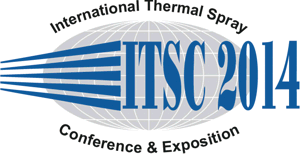
|
3713 |
|
Thursday, May 22, 2014, Hall H1 3:00 PM Novel Industrial Applications |
|
Approach to the use of thermal spray coatings for valves |
|
Oleg Grachev* / Technological Systems for Protective Coatings, Ltd, Russian Federation Lev Baldaev / Technological Systems for Protective Coatings, LTd, Russian Federation Vitaly Geraskin/ Plackart, JSC, Russian Federation Svetlana Muhametova/ Technological Systems for Protective Coatings, LTd, Russian Federation Maksim Kiselev/ Technological Systems for Protective Coatings, LTd, Russian Federation |
|
The article is devoted to research the materials and technologies for hardening of valves in order to select the most efficient solutions for a particular product. Parts of valves operate in the conditions of transported environment, high pressures on the sealing surfaces, whereby parts are exposed to slotted erosion, corrosion, which leads to product failure. The combination of destructive factors depends on the destination and type of valve, in connection with which techniques and materials for reinforcement are varied. To select the type of the coating material and the method of its application highlights the main factors inherent valve operation: - service temperature; - operating pressure ranges; - design of valves; - temperature and chemical resistance of coating; - weld ability for weld overlays; - material availability and cost. As a result of the analysis and on the basis of practical experience was found that for valves, operating under the pressures greater than 30 MPa and high temperatures as a hardening treatment is necessary to use surfacing (PTA, LC) with hard alloys based on nickel, cobalt and iron. When valve operates in temperatures up to 250 ° C and low specific pressure is advisable to use a high velocity spraying (HVOF, HVAF) using materials based on metal-ceramic (WC, Cr3C2, TiO2). To recommend the type of coating comparative tests was carried out (electrochemical corrosion resistance, fatigue test, galling test). |